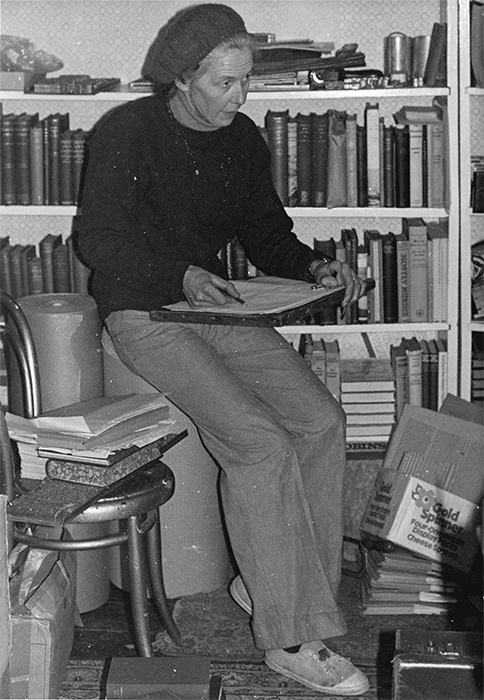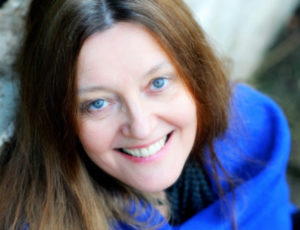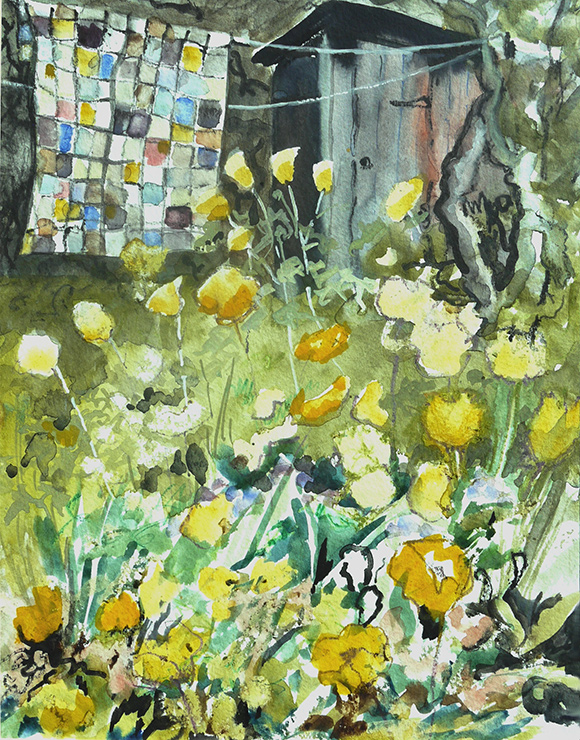Edinburgh International Book Festival 2019 : Gerda Stevenson and Bill Hare
When Bill Hare came to choose a cover for his new book Scottish Artists in an Age of Radical Change, he was a bit stuck. If he chose one of the artists he had written about, the rest might be piqued. If he made a collage of all of them, his cover would look like a stamp album. Then he had an idea.
In 1968 the Scottish art collective Boyle Family launched its project World Series. They threw darts at a map of the world to identify one thousand areas of the earth’s surface to duplicate. On travelling to a selected site, the Boyles would throw a T-square in the air to select a random area, which they then depicted as faithfully as possible. The only Scottish site was Barra Beach. Hare decided to use this image for his cover.
I wanted people to feel they were picking up a piece of Scotland.
Introducing Hare at the Edinburgh International Book Festival, chair Susan Mansfield tells us that he has been writing about Scottish art for over thirty years (though he says that only with the publication of this book ‘can I feel that I am no longer an imposter…I am an art historian at long last.’) His new book is a collection of that writing.

The years since 1945 cover a very successful period in Scottish art, one in which some artists have gained an international reputation. The reasons for this are, says Hare, complex in that the first generation working after the war set a standard of artistic achievement and critical success that inspired subsequent generations to emulate them.
They created a momentum that had a knock-on effect. The inter-war years had been dominated by the inward-looking, isolationist attitudes of a small community of artists who all knew each other, but the war caused that group to disperse, and the next generation was keen to engage with European and North American art.
Some artists responded to the changes that were taking place in wider society (John Kirkwood, Ken Currie), others were more interested in the changes taking place in Western contemporary art, but all of them were keen to move forward, to outdo previous generations. Although he finds many of the ideas behind modern conceptual art interesting, the end product can sometimes be visually boring. Hare singles out Douglas Gordon as an exception.
Gordon produces visually engaging conceptual work such as 24 Hour Psycho, taking something that we are all familiar with (or think we are familiar with) and representing it in a new and challenging way.

Having broad tastes in art, Hare has tried to give a representative cross-section of post-war Scottish artists; men and women working both in and out of Scotland, some well-known (Paolozzi, Alan Davie, Joan Eardley) and some less so. When he worked at Talbot Rice Gallery the curator, Duncan Macmillan, was very committed to promoting Scottish art, which is how Hare met many of the artists featured in the book. He hopes to draw attention to some who may not have had the critical and public attention they deserve.
Hare has interviewed numerous artists; and indeed these interviews were one of his reasons for writing the book. He wanted readers to feel like they were in direct contact with the artists. When Peter Hill set up Alba – the first Scottish art magazine for decades – he commissioned interviews with Eduardo Paolozzi and Alan Davie, and Hare has very entertaining stories to tell about both of them.
Female artists were still having a hard time in the post-war years; even Joan Eardley (the only full-time female artist in Scotland at that time) was slammed in the press when she had the audacity to paint a nude male – but closer to home, another woman became an artist because she was denied entry to her chosen profession.

Christian Small graduated in Chemistry from St Andrew’s University just after the war, an achievement in itself when so few women entered higher education. When she applied for a job in her field though, back came the rejection letter:
‘We regret your sex…’
She kept this letter all her life.

Small never worked in chemistry, though much later on she did have a job at the Camera Obscura in Edinburgh. Instead she devoted herself to her family, and increasingly to her art. Actress, director and writer Gerda Stevenson grew up alongside Small’s daughter in West Linton and knew Christian all her life. Although people knew that Small painted, it was only when she died in 2016 that the vast extent of her work became clear.
The family asked those coming to Small’s wake to bring any of her pictures that they might have. They were stunned by how many appeared. A group was formed – The Friends and Family of Christian Small – and it decided to hold an exhibition, then to produce a book. Inside and Out: The Art of Christian Small was initially community-published with the support of the Alice Hamilton Trust, but when it sold 500 copies in its first ten weeks it was taken over by Scotland Street Press.
More exhibitions have followed, and now Stevenson is at EIBF to introduce it to a wider public. The group asked Stevenson to write poems to accompany the illustrations, while Small’s daughter Jenny Alldridge, herself a textile artist, has contributed her own prose.

Small was, says Gerda, a fascinating, complex woman. She was hungry for information about the world, loved conversation and was always keen to talk about books and ideas. Her father, a First World War hero, had suffered from PTSD. This had a huge impact on the family, and a lasting effect on Small, who was always anxious and sometimes eccentric.
Her art was her solace, her peace.
Small was self-taught, painting and collaging animals, everyday objects, and most of all the local landscapes of the Pentlandsand she would often ride there on her bicycle. Later she attended Edinburgh College of Art one day a week, studying under Sir Robin Philipson. She worked in pen and ink, watercolour, pencil and charcoal, and collaged using tissue, cardboard and newspaper.
‘She could create beauty out of almost anything, however unlikely: a pair of old boots; her shopping arranged in a semi-transparent plastic bag; her fellow passengers on the local bus; the washing on the line in her garden.’ (Ginny Barnes, friend and fellow West Linton artist)
One of the slides Stevenson shows is Model in a Scarlet Fez*, which was probably painted while she was at ECA and has echoes of James McBey in its simple lines and exotic subject matter, a contrast to many of Small’s other paintings such as Dandelions* (which, as a child, Stevenson saved up to buy from Small), Boy Among the Pines*, and Conference of Pears*, the latter – a row of ripe pears on a cottage windowsill, the world outside white with snow – appearing on the cover of the book.

Later, after her divorce, Small moved into her mother’s cottage; Patchwork Quilt* is a charming painting of the little garden, full of flowers, with the quilt blowing on the washing line. Small was a keen needlewoman and made this quilt from scraps of her children’s clothes;
‘Those laughing times stitched onto memory.’
From the fame of Paolozzi and Davie to the quiet work of Christian Small, from Psycho 24 Hours to Patchwork Quilt, the post war years have produced (and continue to produce) outstanding art.
*Christian Small did not name any of her works; the titles are those of the poems Stevenson has written to accompany the pictures.
Scottish Artists in an Age of Radical Change: 1945 to the 21st Century by Bill Hare is published by Luath Press
Inside and Out: The Art of Christian Small, edited by Gerda Stevenson, is published by Scotland Street Press. For more information about Christian Small visit http://christiansmall.co.uk